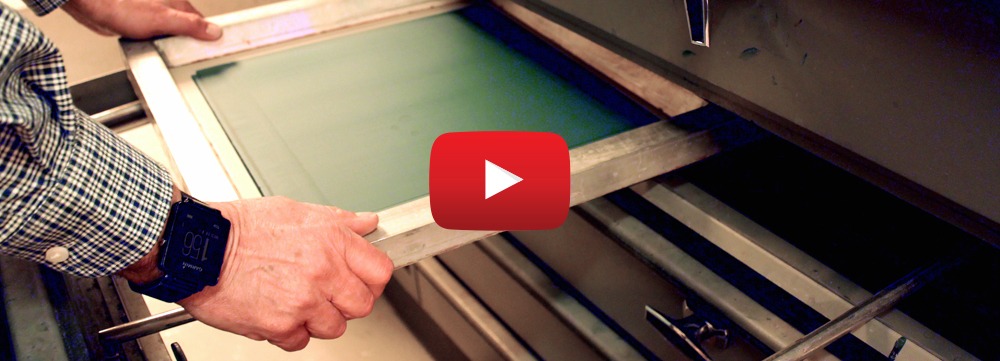
Drying A Screen for Screen Printing
A properly made screen is the most critical part of the screen printing process. After you coat your screen, properly drying your emulsion coated screen for screen printing will avoid issues on press later. Follow these Quick Mick Tips to ensure a properly dried screen.
Proper Lighting When Drying A Screen for Screen Printing
The first thing you want to do is make sure you are using lights in your drying area that properly filter UV light. If the emulsion on your screen is introduced to UV lighting the exposure process will begin and your screen will need to be reclaimed.
Protect Screen from Lint and Dust
Once you have coated your screen with emulsion, it is very important to keep dust, lint and other debris particles off your screen. Lint and dust will cause pinholes in your screen, which will then cause unwanted ink spots on your finished product. Using a closed screen drying cabinet is the best way to avoid lint and dust getting on the emulsion of your screen, but if you don't have a screen drying cabinet then a screen drying rack will also work. Just remember to keep your drying area clean and wipe down any surfaces that collect dust on a regular basis.
Drying a Screen in a Drying Cabinet
It's important with a direct emulsion that you always dry your screen squeegee side up. This allows for gravity to work its magic and pull the emulsion through the screen, resulting in a better screen that will give you consistent results. If you are drying your screens in a drying cabinet, you will be able to control temperature, humidity and time. Your temperature shouldn't be over 110°F (44°C) and your screen can take anywhere from fifteen minutes to an hour to be completely dry.
Drying a Screen on a Drying Rack
When it comes to screen printing, the less humidity the better, which is especially true when talking about drying time. Higher humidity means longer drying time and lower humidity means your screens will dry faster. If you are using a drying cabinet you will be able to control the humidity and temperature easily within the cabinet. However, if you are using a screen drying rack, then you will need to monitor these factors in your drying area. Ideally you want to keep your drying area between 80-105°F with a low humidity (less than 50%). We recommend having a thermometer to measure temperature, as well as a hygrometer to measure humidity. Using a fan to circulate the air around the drying rack can help the drying time of your screen, as well as using an emulsion that is formulated for humidity, such as ChromaLime Pure Photopolymer Emulsion. The amount of time it will take for your screen to dry on a drying rack will vary depending on your drying conditions.
Storing Screens After Drying
Once your screen is dry, remove it from the drying cabinet or drying rack. Your screen is now ready to shoot. If you are not ready to use the screen, store it in an area that is cool, dark, and dry until you are ready to image the screen. This will extend the shelf life of the screen. Please note that unexposed emulsion can reabsorb moisture from the air, so if you are storing your screens in high humidity you may need to dry your screen again before exposure.
Click below to watch a video in which Mick Orr, Applications & Training Specialist for Chromaline Screen Print Products, talks about drying screens for screen printing.
Contact Chromaline Today
If you have any further questions about drying a screen for screen printing, please contact us today.

